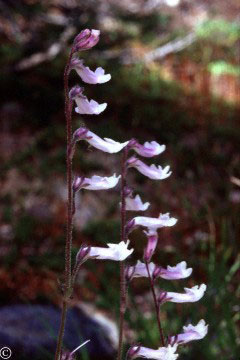
Shrubby penstemon, Penstemon fruticosus (Pursh) Greene (left, right) The shrubby penstemon is an attractive, and common species that grows from mid–elevations into the subalpine zone. Its stems are woody, and its leathery leaves are evergreen. When mature, the plants form shrubs that may grow to be quite large (left). Showy, light-purple flowers are up to two inches long. Several varieties are recognized, identified mostly by the form of the leaves. Ours, illustrated here, with lanceolate, smooth-edged leaves is var. fruticosus, the most common variety. Lewis and Clark found the shrubby penstemon while on the Lolo Trail (June 15, 1806).
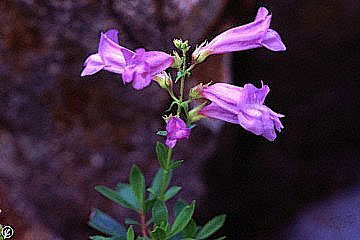


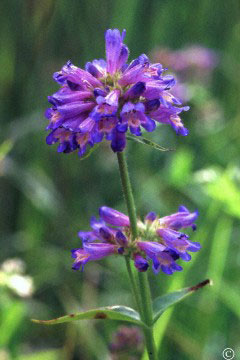
Hot-rock penstemon, Penstemon deustus Douglas ex Lindl. (right) grows mostly on cliffs and other rocky surfaces. That growth preference, as well as its white flowers and shallowly serrated leaves, serves to identify the plant.
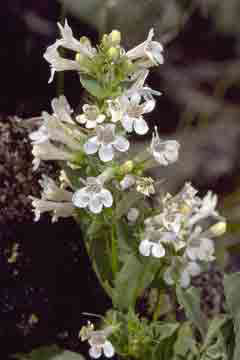
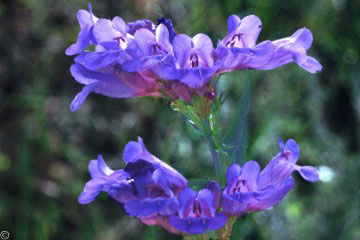
Dark blue penstemon, Penstemon cyaneus Pennell (right) is a similar, colorful, large-flowered plant that grows only in Idaho, Montana and Wyoming. A tendency for its flowers to be borne along one side of the stem distinguishes it from the Payette penstemon
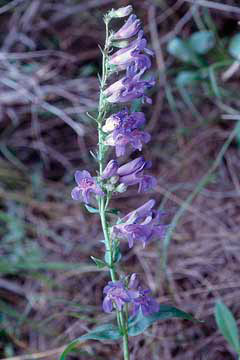
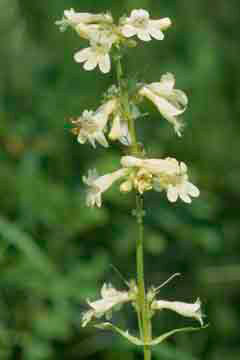
Small-flowered penstemon, Penstemon procerus Douglas ex Graham (right) is the most common of Idaho’s penstemons. It has small, narrow-tubed, densely arrayed flowers with lips that often close the mouth of the flower. The plants are common throughout the West, from foothills to above tree-line.
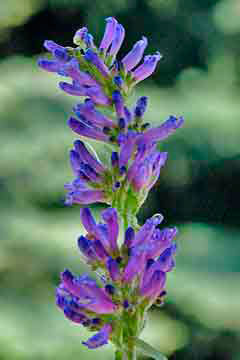
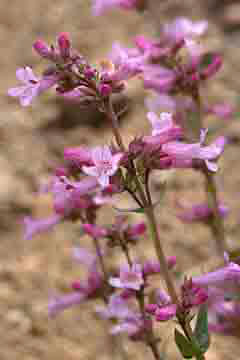
“Pink Penstemon,” Penstemon confertus x procerus? The many species of penstemon, their variability, and a tendency for species to cross-breed, gives credence to the belief that the genus Penstemon is one that is actively evolving. The “pink penstemon” shown here is an example. It appears to be a hybrid between the two species shown above, Penstemon confertus and Penstemon procerus (see Strickler, D.: Northwest Penstemons)
Wilcox’s penstemon, Penstemon wilcoxii Rydb. (left) grows in the northern half of Idaho, spilling over into neighboring states. The plants are tall, with finely serrated, large stem leaves, and a series of long paired stemlets that help to identify the plant. These bear clusters (“panicles”) of moderately large, blue flowers. The plant was collected by Meriwether Lewis near Kamiah, Idaho, in 1806.
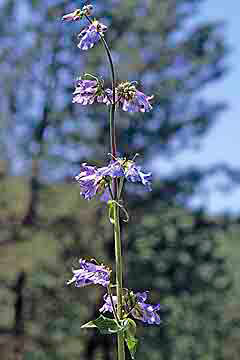
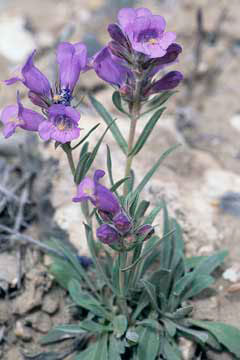
Two penstemons with similar, large, light purple flowers are:
Fuzzy-tongue penstemon, Penstemon eriantherus Pursh (left) bears a few large, wide, light purple flowers with more-or-less prominent “guide-lines” within the throat. While eriantherus means “hairy-anther,” the degree of hairiness, and the prominence of the guide-lines varies considerably among the five recognized varieties. The Idaho variety, var. redactus Pennell & D. D. Keck, is a low plant with a rather sparsely bearded yellow stamen.
Twinleaf penstemon, Penstemon diphyllus Rydb. (right). The twin-leaved (diphyllus) penstemon is characterized by large pale-purple flowers whose upper lips are split for more than half their length, and by paired, toothed leaves ranged along the stem. A mountain plant, it grows in southern Idaho, as well as in Washington and Montana.
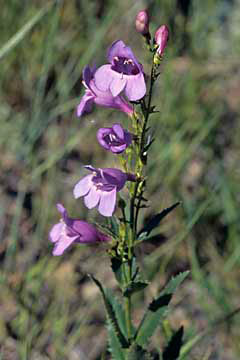
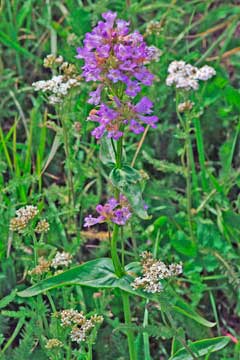
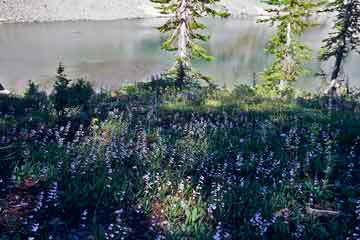
Tweedy’s snowlover, Chionophila tweedyi (Canby & Rose) L.F. Hend. (left, right) appears soon after the snowmelt. Half a dozen or so lavender-tinged flowers, their lips turned up at the end, bloom on one side of a stem that arises from a basal rosette of small oval leaves. The plant is related to the penstemons, and was formerly classified as Penstemon tweedyi. Although occasionally seen lower, it mostly grows high in the mountains of Idaho and neighboring Montana. The name honors Frank Tweedy (1854-1937), a topographical engineer with the U.S. Geological Survey. Chionophila is from the Greek xioni meaning “snow” and filos for “friend.” The inelegant name “toothbrush flower” has also been applied to the plant.
